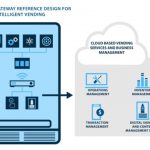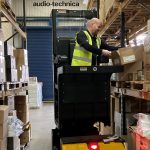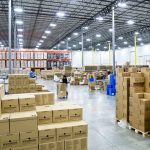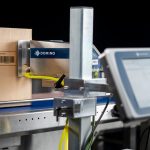Industry Talk
Regular Industry Development Updates, Opinions and Talking Points relating to Manufacturing, the Supply Chain and Logistics.How users can benefit from BEUMER Group as a partner and which trends to expect
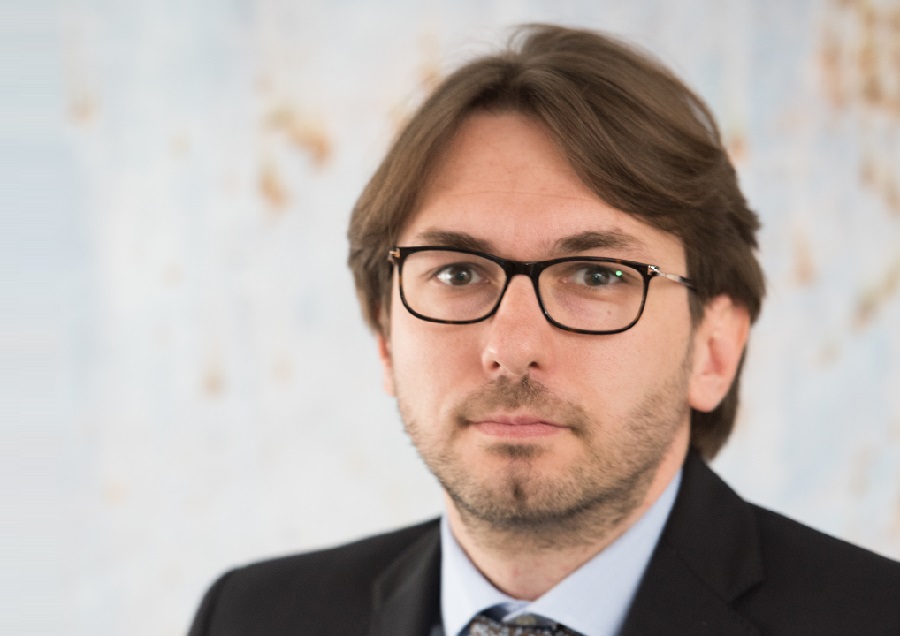
At bauma in Munich BEUMER Group provided information on their system solutions expertise for the mining and raw materials industries and port handling. The portfolio includes curved belt conveyors, blending bed systems as well as ship loaders. Andrea Prevedello, Global Sales Director CL Systems of BEUMER Group, explains in this interview how users can benefit from BEUMER Group as a partner and which trends they can expect.
Mr Prevedello, at bauma you provided information on overland conveyors and Pipe Conveyors. Can you tell us a bit more about a current project?
Andrea Prevedello: What immediately comes to my mind is this very exciting project in the Belgian town of Flémalle. A coal-fired power plant was operated here in the past. The coal residues are landfilled on a fly ash stockpile. We installed a Pipe Conveyor to transport the fly ash to the Maas river for shipment. Its enclosed design prevents the volatile material from coming into contact with the environment and enables a low-noise transport to the destination. This was very important as the system runs over public motorways, railways and residential areas. The transport of the fly ash is carried out in strict compliance with safety standards, taking into consideration environmental protection and the effect of noise pollution on the local residents. It is planned to dissipate the entire stockpile within the next ten years, and repurpose the terrain into a nature park.
What were the challenges during this project, for example with regard to the installation of the system?
Andrea Prevedello: The installation presented itself as quite a challenge, in this picturesque, but also quite hilly environment and as the Pipe Conveyor runs over roads, rails and residential areas we had to comply with public regulations. We set up three teams. We needed a safe conveying system design, that would prevent any environmental impact and noise pollution during the bulk material transport. In the first team employees of the local authorities worked in close cooperation with our experts. The second team was made up of ten BEUMER Group employees that assembled the system. Special cranes and helicopters were used for the assembly work. We assigned the third team for this: the Heliswiss International AG from Küssnacht, Switzerland. They provide transport and construction flights with heavy lift helicopters. Extremely precise flight manoeuvres were necessary so that the technicians could safely assemble the elements suspended from the helicopter to the steel structure. The pilots had to guide the components exactly to the bore holes of the connecting piece so that team II could then bolt them together. The BEUMER Group employees were working on platforms attached to cranes in heights of up to 45 metres. It was quite a sight!
How can you ensure that the customers always receive the best solution that allows them to remain sustainably competitive?
Andrea Prevedello: An essential feature of our transport solutions is that they enable horizontal and vertical curves. This permits us to adapt the sections to the optimum route and we dont’t have to use straight line sections to build around obstacles. Angles of inclination of up to 15 degrees are possible, depending on the characteristics of the material to be transported and the topography, with lengths of more than twelve kilometres. Due to the ability to navigate curves, considerably fewer and in some cases no transfer towers are required. The customer gets an ideal solution which allows for substantial cost savings and the system continuously transports the material even over challenging ascending sections and downward slopes – this was a great advantage especially in Flémalle. Using BEUMER calculation programs, we precisely calculate the static and dynamic tractive forces of the belt during the development phase. This is the prerequisite for the safe dimensioning of the curves. BEUMER Group selects the required types of drive technology and conveyor belts based on these calculations. This ensures longevity of the entire system.
Would there also have been alternative possibilities for this task, using trucks for example?
Andrea Prevedello: Mine operators and manufacturers of cement and building materials often rely on trucks for the transport bulk material, even over long distances. These vehicles certainly also have their justification. However, depending on the terrain, they can rapidly reach their limits: they require well-developed roads and fuel, for example and the costs for the construction, maintenance and possible extensions are significant. The ecological aspect needs to be considered as well: new roads and access roads have a serious impact on the landscape. And this was to be avoided especially in the area around Liège with small villages along the Maas river as well as forests and unique landscapes. In addition, there are the emissions caused by truck traffic, which includes toxic substances as well as noise and dust.
Our belt conveyors are provided with environmentally safe electric drives and low-energy belts. The installed motors are mostly adjustable which permits the loads to be optimally distributed on the drive units under various operating conditions. If the belt conveying system conveys downhill, the system works in generative operation. The generated electric energy is fed back into the public network by a regenerative feedback unit. Depending on the project, our belt conveying systems require up to 90 percent less primary energy than comparable truck transports. Users often reduce their operating costs by several million euros per year. If you do not know which solution to choose, a cost comparison will help.
As a system provider you also have stockpile equipment in your portfolio. What does the scope of supply look like, how do you support the operators?
Andrea Prevedello: For this stockpile equipment, we offer the full range of stackers and scraper reclaimers. These can cover different functions as for example simple storage or mixing of the bulk material, and ensure a maximum mixing effect. Users can also efficiently homogenise different bulk material qualities which ensures the uniformity of the raw materials used. My colleagues carry out the entire engineering of the system. They calculate the storage dimensions and provide the design and static calculations of the associated storehouses. The blending beds are customised according to the requirements. BEUMER proposes either longitudinal or circular stockpile designs. The recommended design shape results from the spatial conditions and the amount of the material to be stored. Additionally, BEUMER provides material-specific detailed solutions with robust and low-wear equipment. The environmental impacts are also very low as minimal noise and dust occurs during operation.
In what industries are your solutions needed?
Andrea Prevedello: This can vary a lot, because our system solutions are used wherever you need to transport large quantities of bulk material. This is particularly true for the ore and raw materials industry, but also applies to applications beyond these traditional sectors, such as the transport of cereals. In ports, for example, we ensure that different materials are efficiently loaded onto ships.
What is particularly important when it comes to these loading systems?
Andrea Prevedello: The mobile and swivel-mounted ship loaders have a telescopic chute and a throw-off belt conveyor to make loading as efficient and flexible as possible. The ship loader is also equipped with a dedusting unit which keeps the process emission-free. We also offer bulk loading heads which are used to load bulk materials into silo vehicles quickly and without dust. Special fill level indicators are used, tailored to the bulk density, flow characteristics and temperature of the loaded cargo.
Due to rising living standards, especially in emerging countries and the expansion of key and future technologies, there is a growing demand for most raw materials. How will this development affect plant construction in general?
Andrea Prevedello: The prices for raw materials such as iron ore and copper are rising rapidly. This is why we notice that a lot of companies are willing to invest. In order to cover the increasing demand, there is an overall trend towards larger tonnages and throughputs since larger manufacturing facilities are more efficient. Many users don’t want to set up several parallel systems, but want to cover their entire requirements with one line or a minimum number of lines. This trend has a considerable impact on how we develop our systems.


